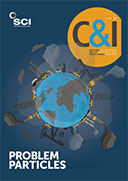Growing millions of bacteria on your rooftop may not sound like such a good idea. But scientists have now trained bacteria to grow and cover themselves with semiconductor nanocrystals that act as tiny solar panels for capturing and storing the energy from sunlight.
The resulting ‘Cyborg’ bugs could one day prove far cheaper and more efficient than conventional solar PV panels. And because they continuously self-replicate to repair any damage, they would never wear out and stop working, according to Kelsey Sakimoto at Harvard University, speaking at the ACS meeting in Washington in August.
Sakimoto chose to work with the naturally occurring, non-photosynthetic bacterium, Moorella thermoacetica, which produces acetic acid from CO2 as part of its normal respiration. M thermoacetica fed on synthesised cadmium sulphide (CdS) nanoparticles and the amino acid cysteine grew the CdS nanocrystals on their surfaces, Sakimoto reported. The bugs then used these solar nanocrystals to produce acetic acid from CO2, water and light - at quantum efficiencies of above 80%, he noted: ‘The vast majority of the electrons are used to make acetic acid.’
The group is particularly interested in using the hybrid bugs to generate solar chemicals. Acetic acid is a versatile chemical that can be readily upgraded to various fuels, polymers, pharmaceuticals. Coupling the hybrid bugs with other bacteria such as E. coli, for example, transforms the acetic acid into drop in replacement fuels such as butanol or biopolymers such as polyhydroxybutyrate, Sakimoto explained.
While alternative artificial photosynthetic systems can also generate renewable energy and simple organic chemicals from sunlight, these systems require expensive catalysts and are not sufficiently efficient for commercial use.
However, there is still much work to do before the hybrid bacteria are ready for deployment commercially. Among the challenges, researchers would ideally like to find a more benign alternative light absorber to cadmium sulphide, which is relatively toxic. They are also working to increase the energy efficiency of the system. At around 2% currently, this is already far superior to natural photosynthesis at 1%, but Sakimoto is confident that other light absorbers will lead to much greater efficiencies.
As for applications, another possibility would be to harness the bacteria for power generation on a future mission to Mars, he noted, where the long timescales would makes refuelling impossible. A mission to Mars is expected to take around three years, so having a self-replenishing energy system would be a huge advantage. And because the bugs are cannibalistic there would be no need to keep feeding them CdS.





